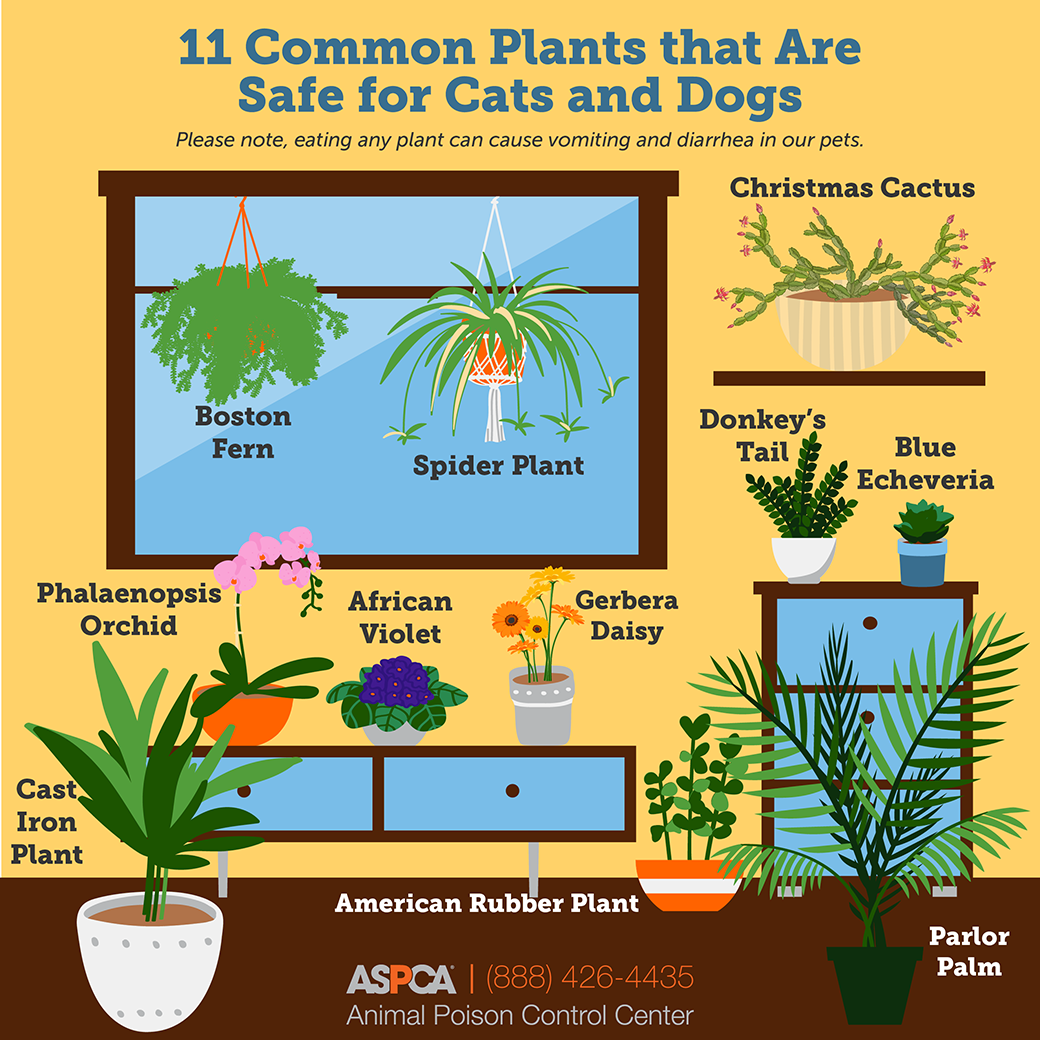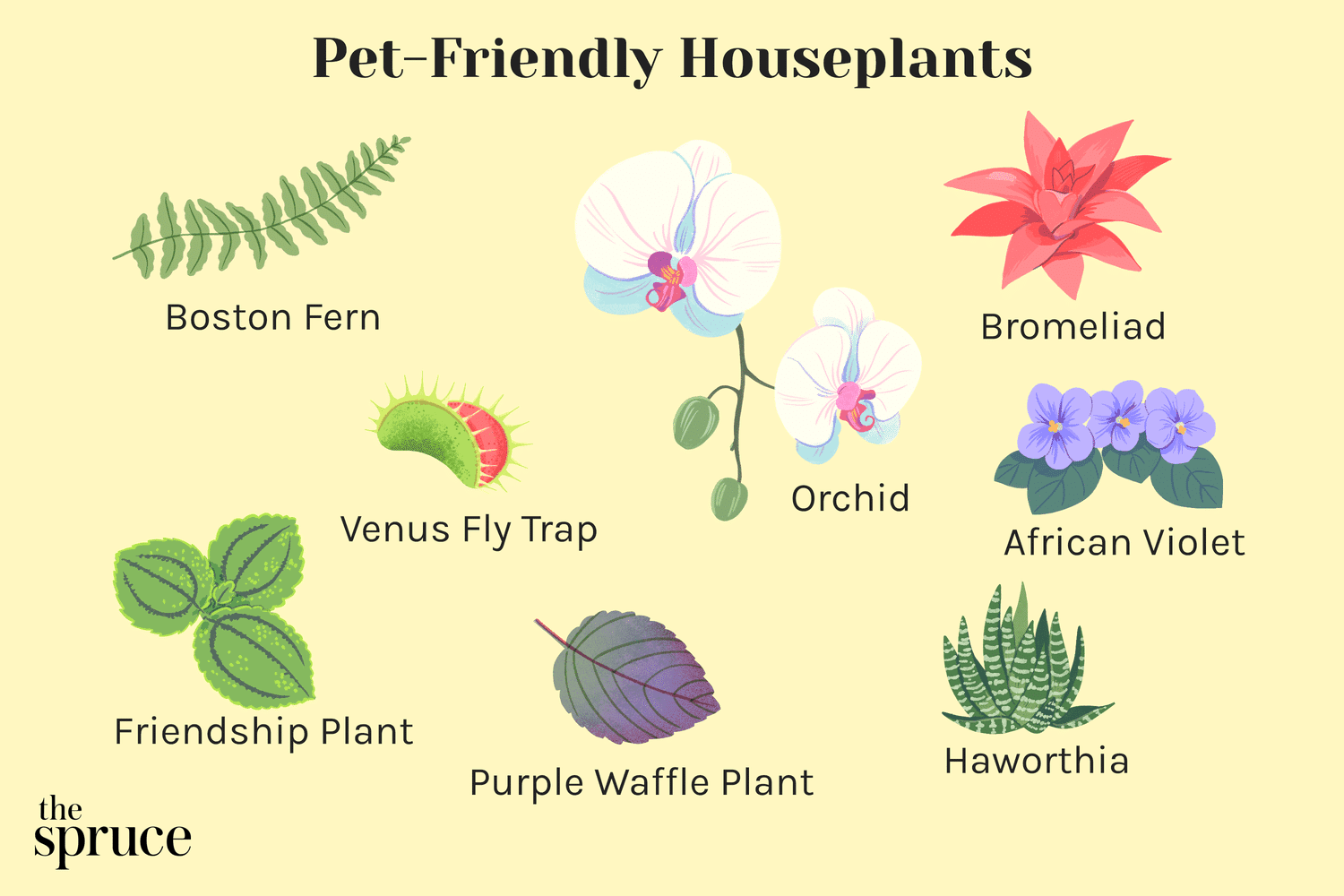The Spider Plant is a house plant that is not toxic to cats. It is safe and easy to maintain.
Many cat owners worry about the safety of their pets around house plants. The Spider Plant offers a perfect solution. It is non-toxic to cats and poses no health risks. This plant also adds a touch of greenery to any home.
Its long, arching leaves are visually appealing. The Spider Plant thrives in indirect sunlight and requires minimal care. It can also help purify the air, making it a dual-purpose choice. For cat owners seeking a safe and attractive house plant, the Spider Plant is an excellent option.
Introduction To Pet-safe Plants
Many people love house plants. They make homes look nice and fresh. But some plants can harm cats. Pet-safe plants are important. They keep your furry friends safe. Knowing which plants are non-toxic can prevent many problems.
Importance Of Non-toxic Plants
Non-toxic plants do not harm cats. Cats like to chew on plants. If a plant is toxic, it can make them sick. Non-toxic plants are safe for cats to chew. They do not cause health problems. This keeps your cats happy and healthy.
Common Toxic Plants To Avoid
| Plant Name | Toxic Effect on Cats |
|---|---|
| Lilies | Kidney failure |
| Aloe Vera | Vomiting and diarrhea |
| Pothos | Oral irritation |
| Philodendron | Swelling and burning mouth |
| Dieffenbachia | Difficulty breathing |
Keep these plants away from your cats. They can cause serious harm. Pet-safe plants are the best choice. They ensure your cats can explore without risk.

Credit: www.aspca.org
Spider Plant
The Spider Plant is a popular houseplant known for its arching leaves and air-purifying qualities. It’s also non-toxic to cats, making it a safe choice for pet owners.
Benefits For Indoor Air Quality
Spider Plants can improve indoor air quality. They absorb harmful chemicals like formaldehyde and xylene.
- Removes harmful pollutants
- Increases oxygen levels
- Reduces airborne toxins
NASA’s Clean Air Study lists Spider Plants among the top air-purifying plants. These plants help create a healthier indoor environment.
Care Tips
Spider Plants are low-maintenance. They thrive in indirect sunlight.
- Watering: Water the plant once a week. Ensure the soil is moist.
- Light: Place the plant in bright, indirect light. Avoid direct sunlight.
- Soil: Use well-draining soil. A mix of potting soil and perlite works well.
- Fertilizing: Fertilize monthly during spring and summer. Use a balanced liquid fertilizer.
- Temperature: Keep the plant in temperatures between 60-75°F (15-24°C).
Spider Plants are also known for their ability to produce “pups” or baby plants. These can be easily propagated and shared with friends.
Areca Palm
Choosing house plants that are safe for cats can be challenging. One excellent option is the Areca Palm. This plant is not toxic to cats and adds a touch of greenery to any home.
Aesthetic Appeal
The Areca Palm boasts lush, feathery fronds that create a tropical vibe. Its green leaves are soft and arch gracefully, making it visually appealing. This plant can grow up to 7 feet indoors, fitting well in large spaces. It also helps in purifying the air, adding to its charm.
Maintenance Guidelines
Keeping an Areca Palm healthy is simple. Here are some essential tips:
- Light: Place it in bright, indirect sunlight.
- Water: Water it when the topsoil feels dry.
- Temperature: Keep it in a room with temperatures between 65-75°F.
- Humidity: Mist the leaves regularly to maintain humidity.
- Soil: Use well-draining potting soil.
| Care Aspect | Details |
|---|---|
| Light | Bright, indirect sunlight |
| Water | When the topsoil feels dry |
| Temperature | 65-75°F |
| Humidity | Mist leaves regularly |
| Soil | Well-draining potting soil |
Follow these guidelines to keep your Areca Palm thriving. This plant is an excellent choice for cat owners. It is both beautiful and safe for your furry friends.
Boston Fern
Among the many houseplants, the Boston Fern stands out as a beautiful and safe option for homes with cats. This lush, green plant adds charm to any room without posing a risk to your feline friends.
Humidity Requirements
The Boston Fern thrives in humid environments. It needs a humidity level of at least 50%. If the air is dry, the fern’s leaves may turn brown and crispy.
To maintain adequate humidity, use a humidifier or place the plant on a tray filled with pebbles and water. Mist the leaves regularly to keep them moist.
Growth Conditions
The Boston Fern prefers indirect sunlight. Place it near a north or east-facing window for optimal growth.
It grows best in temperatures between 60°F and 75°F. Avoid placing it near drafts or heat sources.
Water the fern thoroughly when the top inch of soil feels dry. Ensure the pot has good drainage to prevent root rot.
Use a well-draining potting mix rich in organic matter. Fertilize monthly during the growing season with a balanced, water-soluble fertilizer.
Here’s a quick reference table for the Boston Fern’s growth conditions:
| Condition | Requirement |
|---|---|
| Light | Indirect sunlight |
| Temperature | 60°F to 75°F |
| Watering | When top inch of soil is dry |
| Soil | Well-draining, rich in organic matter |
| Fertilizer | Monthly during growing season |
With proper care, the Boston Fern will remain a lush, cat-friendly addition to your home.
Bamboo Palm
The Bamboo Palm is a popular houseplant that is safe for cats. It adds a tropical touch to any room and is easy to care for. This plant is perfect for pet owners who want to beautify their homes without harming their furry friends.
Ideal Light Conditions
The Bamboo Palm thrives in indirect light. It prefers bright but filtered light. Too much direct sunlight can scorch its leaves. If you place it near a window, ensure it’s shaded or use a curtain. Artificial light also works well for this plant.
Watering Needs
Water the Bamboo Palm regularly to keep the soil moist. Avoid overwatering to prevent root rot. Check the soil by touching it; if it’s dry, it’s time to water. Use a pot with drainage holes to help manage water levels.
| Care Aspect | Details |
|---|---|
| Light | Indirect, filtered light |
| Water | Keep soil moist, avoid overwatering |
| Humidity | Prefers high humidity |
| Temperature | 65°F to 80°F (18°C to 27°C) |
Ensure your Bamboo Palm remains healthy by maintaining the right humidity and temperature. This plant loves high humidity. Use a humidifier or mist the leaves regularly. Ideal temperatures are between 65°F to 80°F (18°C to 27°C).
The Bamboo Palm is a wonderful choice for a cat-friendly home. Its lush green leaves and ease of care make it a favorite among plant enthusiasts.

Credit: www.gardenersworld.com
Calathea
Finding the perfect house plant that is safe for your cats can be a challenge. Calathea is a fantastic choice. This plant is not toxic to cats and adds beauty to your home.
Varieties And Visual Appeal
Calatheas come in various types, each with unique patterns and colors. Some popular varieties include:
- Calathea Orbifolia – Known for large, round leaves with silver stripes.
- Calathea Medallion – Features dark green leaves with light green markings.
- Calathea Lancifolia – Also called Rattlesnake Plant, has long, wavy leaves with dark spots.
These plants have striking foliage that stands out in any room. The leaves often have a glossy finish, enhancing their visual appeal. Calatheas are also known to move their leaves up and down, a fascinating feature for plant lovers.
Soil And Light Preferences
Calatheas thrive in well-draining soil. Use a potting mix that retains moisture but drains well. A good mix includes:
- Peat moss
- Perlite
- Pine bark
Ensure the pot has drainage holes to prevent waterlogging.
These plants prefer indirect light. Direct sunlight can scorch their leaves. Place them in a spot with filtered light. They also enjoy high humidity, making them perfect for bathrooms or kitchens. You can use a humidifier or mist the leaves regularly to maintain moisture.
Haworthia
Choosing the right house plant when you have a cat can be tricky. Many plants are toxic to cats. The Haworthia is an excellent choice. It’s a non-toxic succulent that is safe for your furry friend. This plant is also very easy to care for.
Succulent Benefits
Haworthia offers many benefits. It’s a low-maintenance plant. It requires minimal water, making it ideal for busy people. The plant also purifies the air. It helps remove toxins from your home.
The plant is small and compact. It fits well in tight spaces. You can place it on a windowsill or a small shelf. Its unique appearance adds a touch of nature to your home. Haworthia is also very resilient. It can survive in low light conditions.
Propagation Methods
Propagating Haworthia is simple. You can use offsets or leaf cuttings. Both methods are easy and effective.
- Offsets: These are small plants that grow at the base. Remove them gently and plant them in a new pot.
- Leaf Cuttings: Cut a healthy leaf from the plant. Let it dry for a few days. Then, place it in soil and water sparingly.
Both methods will give you new plants in a short time. This makes Haworthia a great option for plant lovers. You can easily grow more plants for your home or to give as gifts.
:max_bytes(150000):strip_icc()/Catandhouseplants-d94834460ea146d9833adfede4c86b9a.jpg)
Credit: www.thespruce.com
Plant Care Tips For Cat Owners
Keeping house plants and cats together can be tricky. Some plants are toxic to cats. Here are some plant care tips for cat owners to keep your pets safe.
Safe Placement Strategies
Choose spots where your cat can’t reach. High shelves or hanging planters work well.
- Use plant stands
- Hang planters from the ceiling
- Place plants in rooms where cats don’t go
Consider using barriers. Baby gates or closed doors can help keep cats away from plants.
Handling Plant Pests
Check your plants for pests regularly. Use cat-safe treatments only.
| Pest | Cat-Safe Treatment |
|---|---|
| Aphids | Soap and water spray |
| Spider Mites | Neem oil |
| Mealybugs | Rubbing alcohol on cotton swabs |
Make sure to rinse plants well after treatment. This removes any residue that could harm your cat.
Frequently Asked Questions
Are There Any Houseplants That Are Not Toxic To Cats?
Yes, there are non-toxic houseplants for cats. Safe options include spider plants, Boston ferns, and areca palms.
What Plants Are Safe For Indoor Cats To Eat?
Safe indoor plants for cats include spider plants, catnip, cat grass, and Boston ferns. These plants are non-toxic and pet-friendly.
What Bathroom Plants Are Pet Friendly?
Pet-friendly bathroom plants include spider plants, Boston ferns, and orchids. These plants are safe for cats and dogs.
Are Banana Plants Toxic To Cats?
Banana plants are not toxic to cats. They are safe for cats to be around and nibble on.
Conclusion
Choosing non-toxic house plants for your cat ensures a safe home environment. Plants like spider plants, Boston ferns, and areca palms are excellent options. They beautify your space without posing risks to your feline friend. Always research plant safety before bringing one home.
Your cat’s health and happiness depend on it.

My mission is to help you bring the beauty of nature indoors with expert advice, detailed plant care guides, and creative design ideas.





Leave a Reply